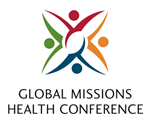
GMHC 2013
Cultural IntelligenceCultural Intelligence
Western missions and service agencies have frequently been unknowing victims of their own culture’s values, communication, social norms and worldview as they seek to minister to people in other cultural contexts. Sadly many well-meant ministries and community development programs have floundered due to lack of culturally appropriate design and operation. This is not only true when we cross national and language boundaries but also includes working within a western value system while crossing barriers of culture that exist even with the United States and Europe. Recently Cultural intelligence has been identified as a way to identify cultural barriers, to find the right inroads to penetrate difficult cultures. When properly employed we can design and develop programs that naturally increase the likelihood of success. In this session we will explore issues of beliefs, values, attitudes, and behaviors that should be considered when working outside of one’s own culture. Research with youth and ministry programs in 50 countries is used to illustrate simple applications of qualitative research to better understand the culture, norms and needs of those we seek to serve through our ministry.
Related Content




Comments